Imagine sinking into a deep, porcelain haven, surrounded by the gentle caress of warm water. This isn’t just any bath; it’s a luxurious escape, a moment of pure indulgence. And the vessel that makes it possible? The iconic clawfoot tub.
What is the purpose of a clawfoot tub?
Clawfoot tubs are classic bathtubs with exposed legs that elevate the tub above the floor. Often associated with vintage style, clawfoot tubs have remained popular bathroom fixtures for over a century thanks to their elegance, versatility, and practicality. This comprehensive guide will explore everything you need to know about purchasing, installing, and decorating a clawfoot tub. If you crave a luxurious bathing experience, relish vintage aesthetics, and have the budget and space to accommodate it, then a clawfoot tub could be the perfect addition to your home. It’s more than just a bathtub; it’s an investment in relaxation, beauty, and a touch of timeless elegance.Clawfoot tubs, also sometimes called freestanding tubs, get their name from the clawed feet that support the tub above the ground. The exposed pipes underneath give them a distinct, retro look.
clawfoot bathtub faucet
Clawfoot tub faucets offer a beautiful and functional upgrade for any clawfoot tub, elevating your bathroom’s style and functionality. Their elegant designs, available in various styles, add a touch of luxury that complements your bathroom .These faucets can be mounted on the deck of the tub or directly on the wall, providing flexibility in installation based on your tub’s design and bathroom vanity‘s placement. Additionally, they are built with durability in mind, ensuring long-lasting performance and reliability.The versatility of clawfoot tub faucets allows you to enhance both the visual appeal and functionality of your bathroom space. With their timeless charm and practicality, these fixtures serve as an essential element in completing the overall look of your clawfoot tub setup, creating a cohesive and beautiful bathroom you’ll love.
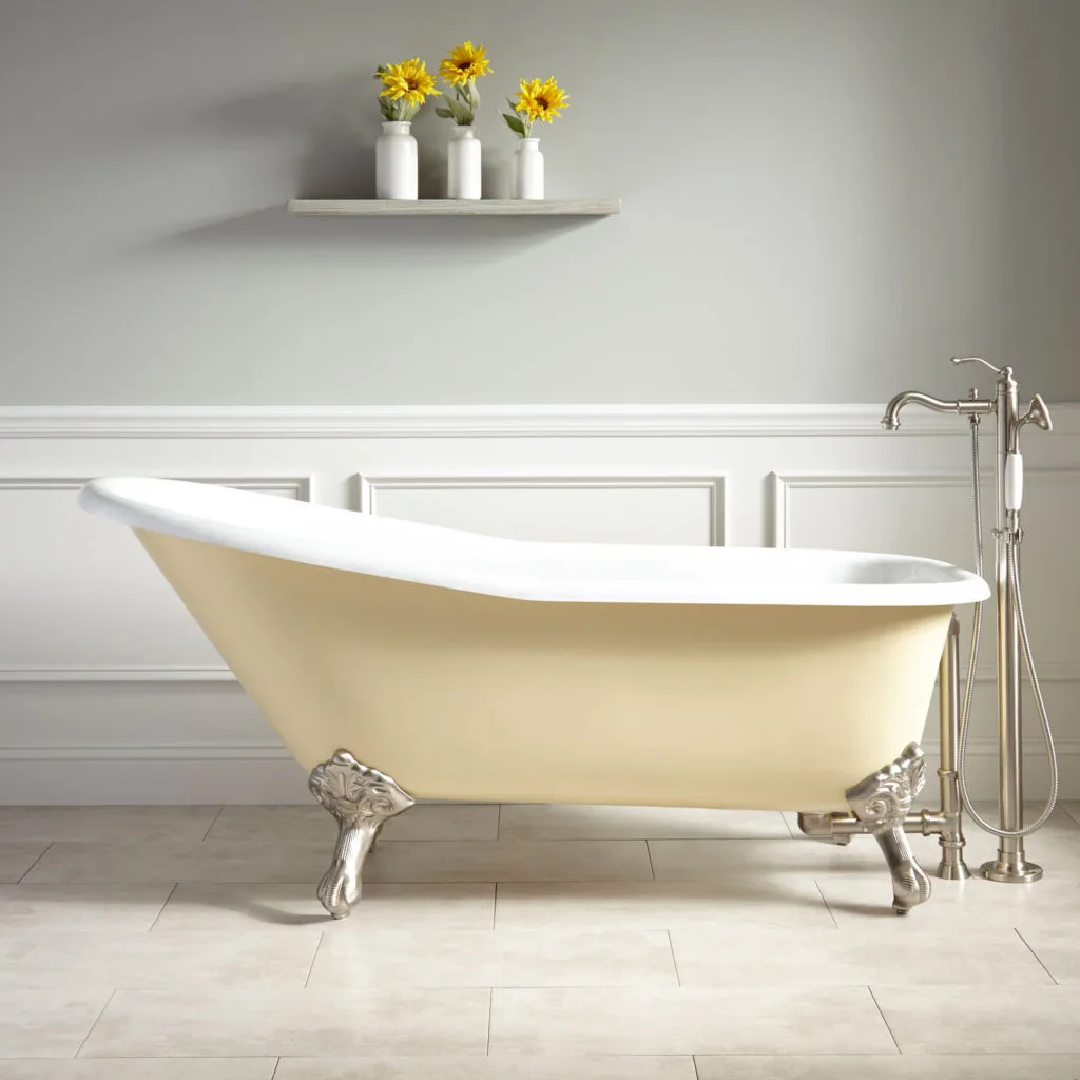
Modern clawfoot tub design ideas
One new way to design clawfoot tubs is to use modern fixtures with the traditional curved tub shape. This creates an interesting look. Adding bright colors or patterns to the surrounding decor can make the tub stand out even more. Another new trend is to add advanced technology, like built-in jets or heating elements, to make the bathing experience better while still keeping the vintage style. Overall, modern clawfoot tub designs offer many ways to mix classic style with modern features.
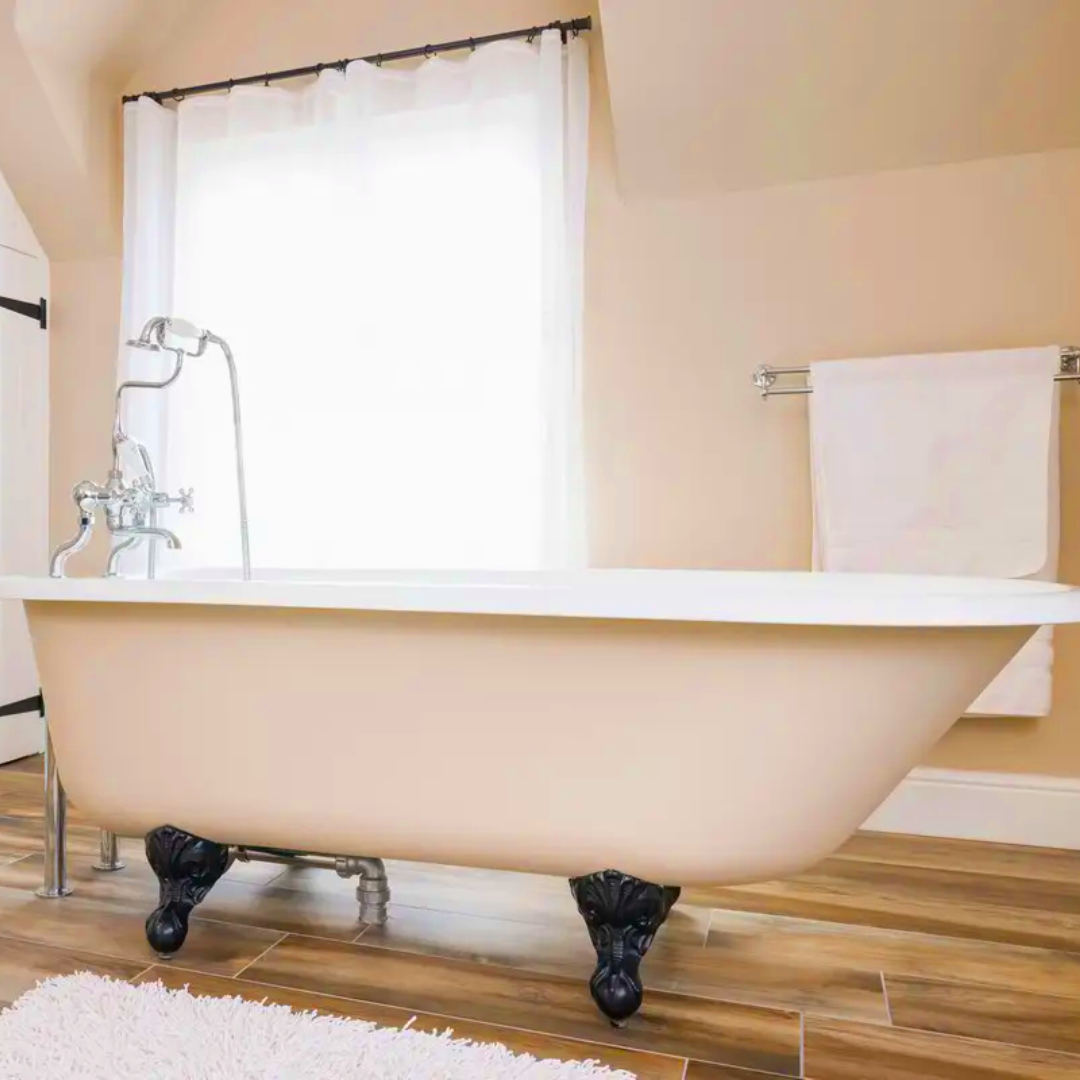
Design and Decor Considerations
To create a cohesive look in your bathroom, consider:
- Hardware – Matching vintage style faucets, shower fixtures, etc.
- Privacy – Curtains, folding screens, or nothing at all
- Accessories – Candles, trays, fresh flowers, bath oils, etc.
- Furnishings – Benches, stools, accent chairs or chaises
- Layout – Leave space around the tub for entering/exiting
- Flooring – Tile, wood, stone – avoid carpeting
Place your clawfoot tub thoughtfully to become the centerpiece of your bathroom. Add other vintage accents to your home decor to complete the look.
Why are clawfoot tubs popular?
Clawfoot tubs work well in vintage, cottage, or farmhouse-style bathrooms. The exposed tub fits small spaces better than bulky built-in tubs.Clawfoot bathtubs have seen a surge in popularity in recent years, and there are several reasons why:
- Vintage, elegant style
- Freestanding versatility – can be placed anywhere
- The deep soaking bathing experience
- Easier cleaning than built-in tubs
- Long-lasting durability
Clawfoot Tub Shower kit
One of the biggest advantages of clawfoot tubs is that you can create a tub-shower combination even in small bathrooms. Here are some options for adding shower functionality:
- Shower Curtain: The most budget-friendly option. Allows for flexible placement.
- Shower Enclosure: A glass enclosure offers a more high-end spa-like feel.
- Shower Wand Attachment: Handheld or overhead shower heads.
- Clawfoot Tub Shower Conversion Kits: Pre-designed kits available.
Consider sloped ceilings and potential water splashing issues when designing your tub-shower layout. Many kits include flash-control curtains. Proper drainage is also important to prevent flooding.
Vintage Clawfoot Tubs
The clawfoot tub originated in the early 1800s as advancements made cast iron and enamel tubs available. By the 1920s and 30s, clawfoot tubs were common in most bathrooms.
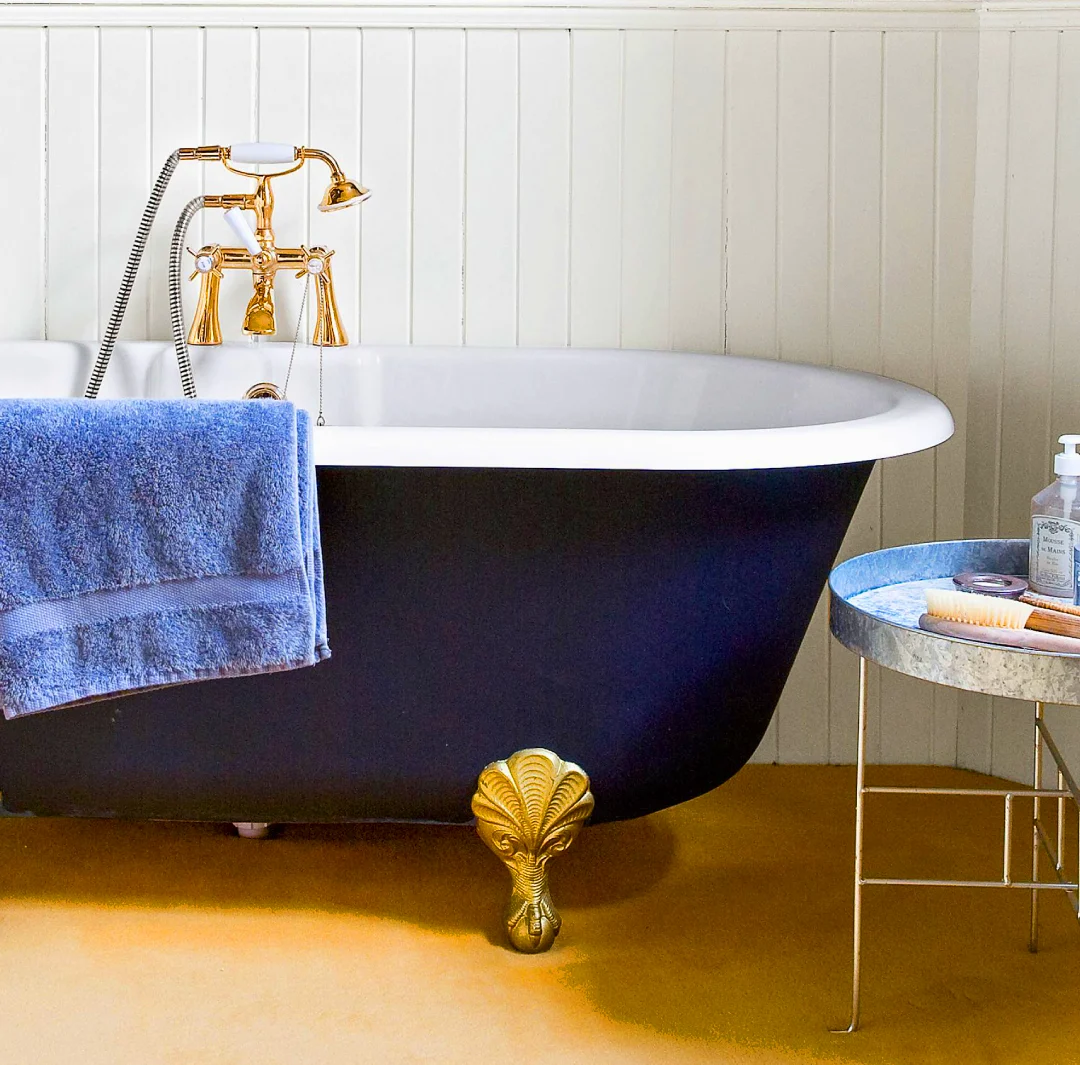
Common Antique Tub Materials:
- Cast iron – Durable, retains heat well
- Porcelain enamel coating – Smooth, glassy finish
- Copper – Elegant but requires more maintenance
- Brass – A historically expensive option
Choosing the Right Countertop Material for Your Home.
Finding and restoring a vintage clawfoot tub takes hunting but brings timeless charm. Check antique stores, salvage yards, or sites like Craigslist. Make sure to inspect for damage. Refinishing and re-enameling services can often repair tubs to “like-new” status.Decorating with an antique clawfoot tub as your statement piece brings vintage character to modern bathrooms. Surround with vintage-inspired hardware, wallpaper, lighting, and accessories.
Cast Iron Clawfoot Tubs Durability
Cast iron is one of the most popular materials for clawfoot tubs today. Benefits of cast iron include:
- Extremely durable – Lasts for decades
- Can be re-finished multiple times
- Excellent heat retention makes baths feel warmer
- Typically coated in porcelain, enamel, or acrylic
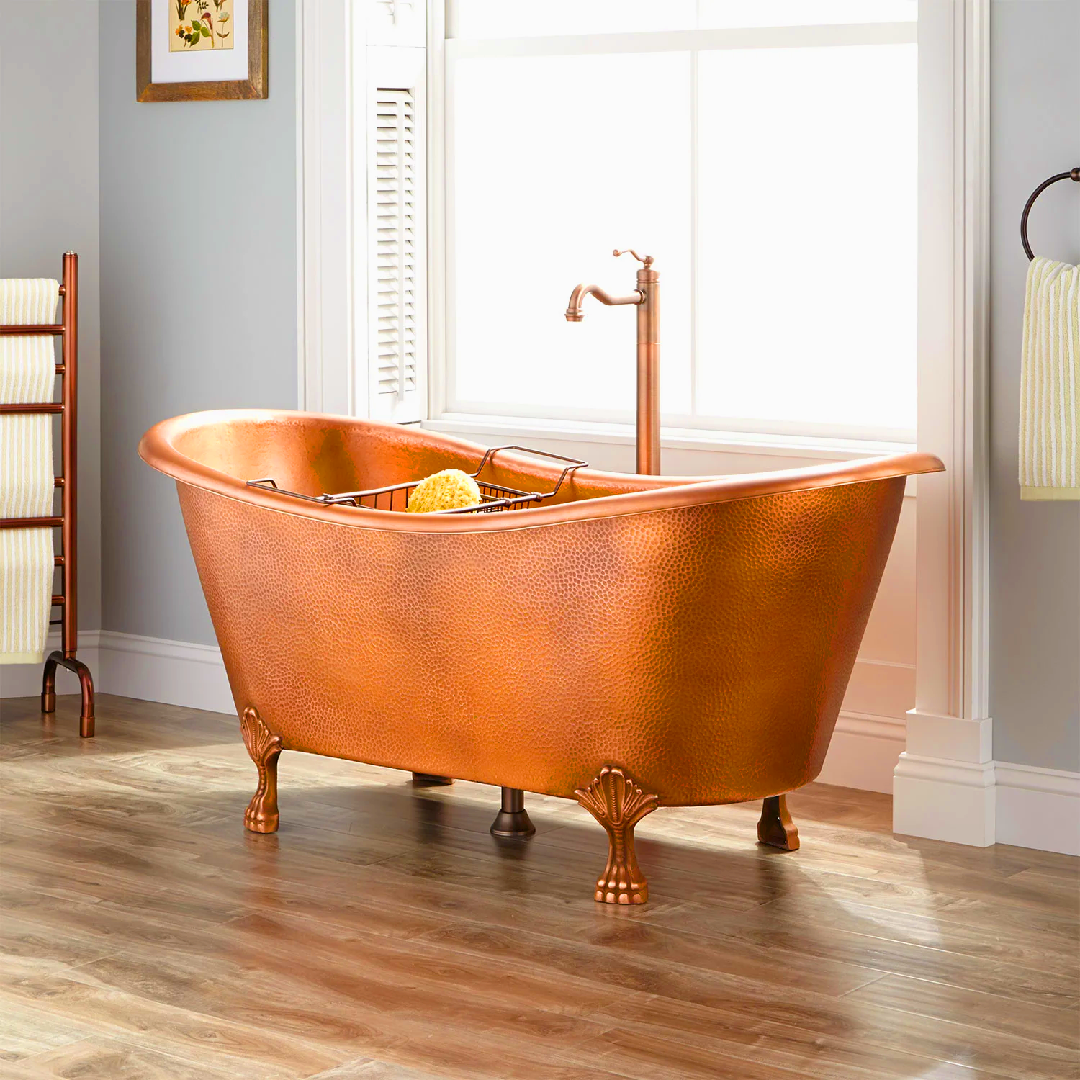
Cast iron keeps water hotter longer than other materials like acrylic. The thick material also provides a sense of luxury. Available in classic styles from extra-deep to roll top in varying lengths. Extra care is needed to clean the surface without damaging the finish.
Are clawfoot tubs and clawfoot bathtubs the same?
While the terms are often used interchangeably, clawfoot “tubs” are intended for bathing and cleaning. Clawfoot “bathtubs” allow for deeper soaking, relaxation, and spa-like features:
- Extra-Deep Well – Deeper water capacity for soaking
- Built-In vs. Freestanding – Permanent installations available
- Luxury Features – Jets, bubbles, chromotherapy lighting, etc.
For a true spa-like soaking experience at home, look for a clawfoot bathtub around 60″ long and extra-deep well capacity. Built-in installation options can make the bathtub feel like your own personal hot tub.
Choosing the Perfect Clawfoot Bathtub
Consider the following dimensions when shopping for a clawfoot tub:
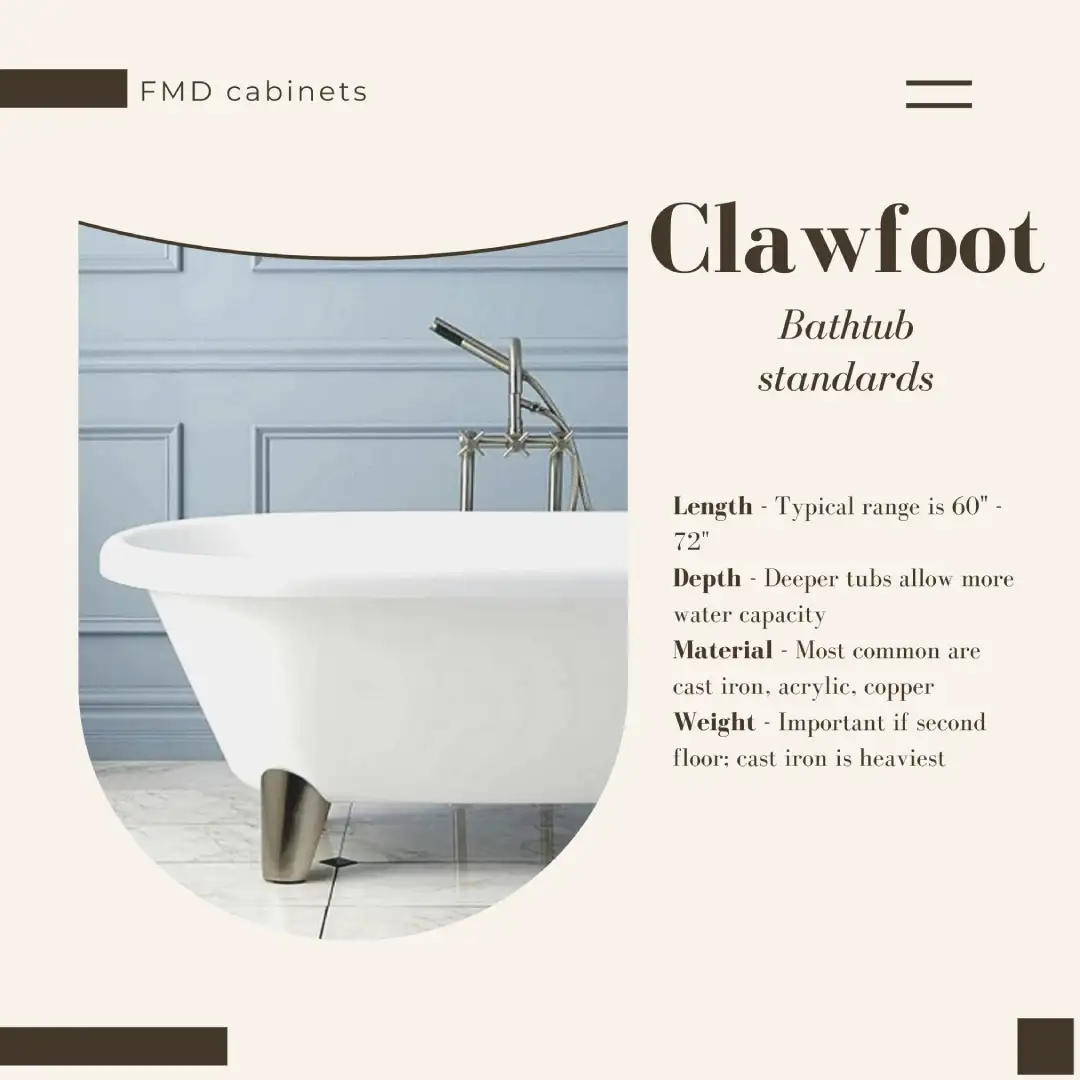
- Length – Typical range is 60″ – 72″
- Depth – Deeper tubs allow more water capacity
- Material – Most common are cast iron, acrylic, copper
- Weight – Important if second floor; cast iron is heaviest
- Style – Vintage, contemporary, slipper, double-end, etc.
- Budget – Prices range widely from $500 – $5,000+
Measure your bathroom space carefully for sizing. Also, factor in costs for any needed plumbing work during installation.
Installing Your Clawfoot Tub
You can either install your clawfoot tub as a freestanding fixture or make a more permanent built-in installation:
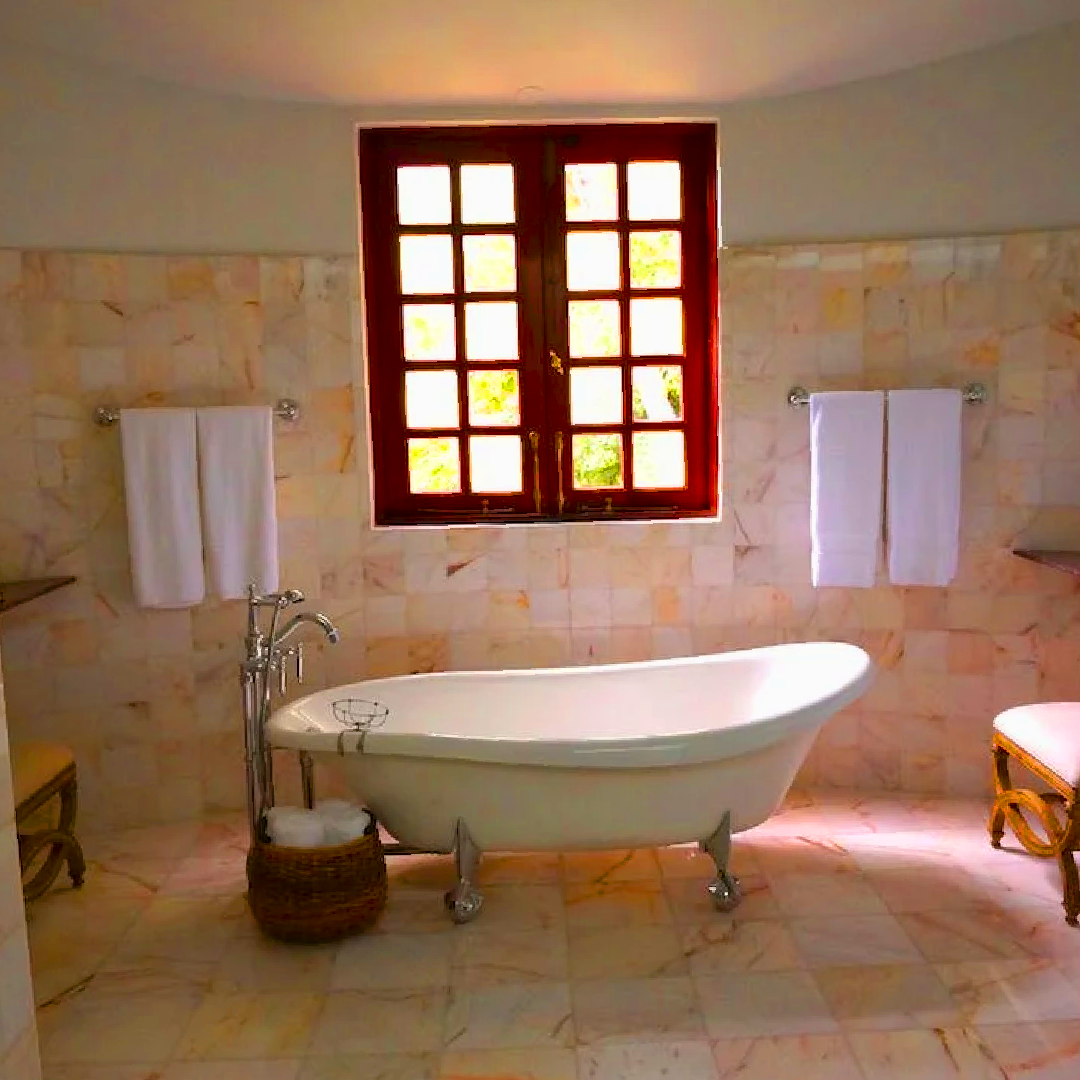
- Freestanding – Quick and flexible, rests on the floor supported by feet
- Built-In – Installed against walls and/or floor for a customized look
For DIY built-in installation, skills in plumbing, framing, tiling, and finish work are required. Hiring a professional ensures proper load-bearing, waterproofing, and code compliance.
How do you waterproof outdoor kitchen cabinets, read more here!
Clawfoot Tub Placement Ideas: Clawfoot tubs provide flexibility, as they are not permanently installed like built-ins. Consider these placement ideas:
- Centered on a wall as the focal point
- Near a window for natural lighting
- Corner installation to maximize space
- Island tub that can be accessed from all sides
- Against a wall with shelving above
- Near the bathroom entrance for a spa-like reveal
- On a raised platform or tile deck for free-standing style
- Angled diagonally in a larger bathroom
Measure carefully and account for plumbing locations as you plan where to place your clawfoot tub. Also consider sightlines, walkways, and how the room will be used.
Restoring Vintage Clawfoot Tubs
To restore a vintage or antique clawfoot tub:
- Clean the surface thoroughly and assess the condition
- Use a chemical paint stripper to remove the old finish
- Repair any chips, cracks, or rust damage with fillers
- Sand the surface to prepare for a new finish
- Re-finish with porcelain enamel, acrylic, or reglazing kits
Common issues with old tubs are rusted or corroded metal, chipped surfaces, and worn feet. Kits are available to resurface yourself or hire a professional for the best results.
Maintaining and Caring for Your Clawfoot Tub
To keep your clawfoot tub looking pristine and prevent damage:
- Clean regularly with a gentle, non-abrasive cleaner made for bathtubs
- Avoid harsh chemicals or cleaners containing ammonia or bleach
- Rinse and dry after each use to prevent residue buildup
- For porcelain/enamel, apply a wax coating 1-2 times per year
- For metal, watch for corrosion and re-seal annually
- Drain and refill water regularly to prevent bacteria growth
- Use a tub caddy, soap dish, and tray to prevent surface scratches
With proper care and maintenance, your clawfoot tub can stay in top condition and last for decades. Be careful not to drop heavy objects inside that could chip or crack surfaces
Conclusion
The vintage style and indulgent bathing experience of clawfoot tubs continue to captivate, remaining a classic bathroom fixture for over a century. This guide equips you with all the knowledge needed – from choosing an ideal size and material to mastering expert installation techniques; it also offers decorating tips that will ensure your incorporation of this timeless tub into your home is flawless. So, pause: relish in the tranquil comfort uniquely provided by immersing yourself in a relaxing soak within a clawfoot tub.
KEYWORDS:
